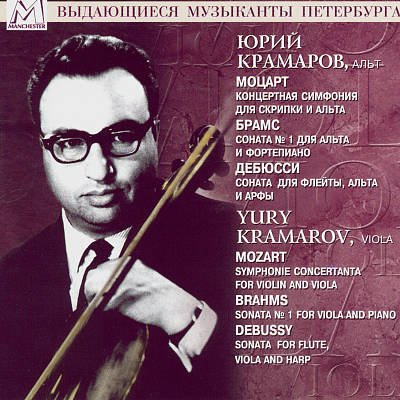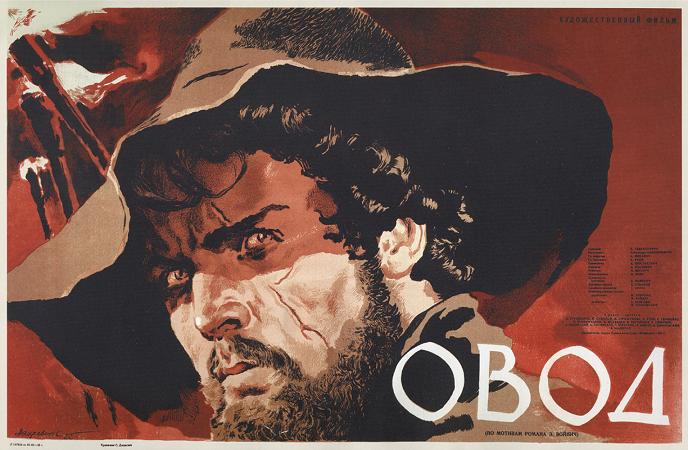Ear Witness #81: Viola. Today we continue on our acquaintance with the viola school. With: Fjodor Droezjinin, Joeri Kramarov, Michael Kugel and others.
In the first episode dedicated to this instrument, we learned about Vadim Borisovski of the Beethoven Quartet, the ‘father of the viola school’ in the Soviet Union.
One of his pupils, and also his successor in the quartet in 1964, was Fjodor Droezjínin (left on the right side picture with Dmitri Shostakovich). He was the first one in Russia to play the concert of Béla Bartók and he worked closely together with composers like Weinberg, Schnittke, Volkonski and Shostakovich, who dedicated his last composition to him. When Droezjinin was a teacher at the Moscow Conservatory, Svetlana Steptsjenko and Yuri Bashmet were his pupils. He also composed work for the viola himself, like the 1959 sonata for viola solo, which is being performed by Julia Rebekka Adler, pupil of Kim Kashkashian and Yuri Bashmet.
 In Leningrad the viola school became popular with the appearance of Yuri Markovich. Kramarov (photo on the left). He was born in 1929 and already at a young age he was practically an orphan because his parents had been arrested as ‘enemies of the nation’. He only saw his mother in 1953 in Bashkiria, her place of exile. After his parents disappeared, Kramarov practically came under the wing of his mother’s friend, with whom he fled to Tashkent in wartime. That is where he started his music studies at the temporarily moved Moscow education. Via Moscow he arrived in Leningrad in 1945, where –after his pre-education – he became a pupil of Isaak Kevitin at the Conservatory. He finished his studies in 1953. After Levitin’s death in 1954 he succeeded him as a teacher and in 1956 he also became the leader of the violas at the Leningrad Philharmonic Orchestra, upon invitation of Jevgeni Mravinski. Right from the start he was a unique and unconditionally honest person and he often clashed with the party. That was also the reason why he was not allowed to tour with the Leningrad Philharmonic to Japan in 1963. He responded by resigning and Mravinski made sure he was not welcome as a soloist anywhere. His work at the Conservatory continued in the meantime but also there he encountered problems. In 1982, the news about his promotion to becoming a professor only reached his house after his death. His pupil Michael Kugel said: ‘He was a great musician who loved music more than he loved himself!’
In Leningrad the viola school became popular with the appearance of Yuri Markovich. Kramarov (photo on the left). He was born in 1929 and already at a young age he was practically an orphan because his parents had been arrested as ‘enemies of the nation’. He only saw his mother in 1953 in Bashkiria, her place of exile. After his parents disappeared, Kramarov practically came under the wing of his mother’s friend, with whom he fled to Tashkent in wartime. That is where he started his music studies at the temporarily moved Moscow education. Via Moscow he arrived in Leningrad in 1945, where –after his pre-education – he became a pupil of Isaak Kevitin at the Conservatory. He finished his studies in 1953. After Levitin’s death in 1954 he succeeded him as a teacher and in 1956 he also became the leader of the violas at the Leningrad Philharmonic Orchestra, upon invitation of Jevgeni Mravinski. Right from the start he was a unique and unconditionally honest person and he often clashed with the party. That was also the reason why he was not allowed to tour with the Leningrad Philharmonic to Japan in 1963. He responded by resigning and Mravinski made sure he was not welcome as a soloist anywhere. His work at the Conservatory continued in the meantime but also there he encountered problems. In 1982, the news about his promotion to becoming a professor only reached his house after his death. His pupil Michael Kugel said: ‘He was a great musician who loved music more than he loved himself!’
One of the many works dedicated to Kramarov is the concert for viola and chamber orchestra of the Belarusian Vladimir Tsytovich. If you can speak of a ‘lost generation’ that followed Prokofjev en Shostakovich, then Tsytovich is part of that generation, remaining rather unknown in the West until after the dissolution of the Soviet Union. Tsytovich was born in Leningrad in 1931. He was a pupil of Boris Arapov at the Conservatory and after his studies he became a teacher there in 1961. His viola concert dates from 1965 and is now played by JYuri Kramarov and the Orchestra of Early and New Music with conductor Eduard Serov.
Valerian Bogdanov-Berezovski, a friend of Shostakovich, dedicated his sonata opus 44 from 1956 to Kramarov.
The viola was popular to more Russians who fled to the safe surroundings of the United States. In 1960 Arthur Lourié composed his duet for violin and viola which you will hear in a performance of Eeva Koskinen and Daniel Raiskin of the Utrecht String Quartet.
In 1944, Igor Stravinski composed his Elegy for viola solo in commemoration of Alphonse Onnou, the deceased founder of the Pro Arte Quartet, established in 1912 in Belgium and since 1941 based in Madison, Wisconsin. Viola player Tatjana Masurenko and piano player Roglit Ishay continue with Stravinski’s Russian song from opera Mavra, where the Russian roots of the later to become French-American are evident. 
And finally more music theater with music by Dmitri Shostakovich for the 1955 film ‘The Gadfly’ of Aleksandr Fajntsimmer. The film was based on the novel of 1897 about an international revolutionary in Italy, by Irish author Ethel Lilian Boole who married the Polish revolutionary Wilfrid Michael Voynich in 1902. In the Soviet Union the book became an real bestseller with 2.5 million sold copies at the end of Voynich’s life. The ‘romance’ of Shostakovich’s music was also used later in the BBC series ‘Reilly, Ace of Spies.’
1. Fjodor Serafimovitsj Droezjinin (6.4.1932 – 1.7.2007).
Sonata for viola solo (1959): 1) Largamente, 2) Vivace, 3) Adagio quasi lento, 4) Maestoso – Allegro risoluto.
Julia Rebekka Adler, viola.
NEOS 11008/09.
2. Vladimir Ivanovich Tsytovich (Leningrad 6.8.1931 – 5.10.2012),
Concert for viola and chamber orchestra (1965): 1) Allegro, 2) Larghetto. Allegro con moto, 3) Lento.
Joeri Kramarov, viola. Orchestra of Early and New Music led by Eduard Serov.
Kontrapunkt 32314.
3. Valerian Michailovitsj Bogdanov-Berezovski (1903-1971).
Sonata for viola and piano in c opus 44 (1956): 1) Allegro assai e poco inquieto, 2) Tema con variazione, 3) Postludia.
Igor Fedotov, viola. Gary Hammond, piano.
Naxos 8.572247.
4. Arthur Vincent Sergejevitsj Lourié (1892-1966).
Duet for violin and viola (1960).
Eeva Koskinen, violin. Daniel Raiskin, viola.
ASV CD DCA 1020.
Igor Fjodorovich Stravinski (1882-1971).
5. Elegy for viola solo (1944).
6. Russian Song from the Opera ‘Mavra’ for viola and piano.
Tatjana Masurenko, viola. Roglit Ishay, piano.
Hänssler Profil CD PH10029.
7. Dmitri Dmitrijevich Shostakovich (1906–1975).
Suite from the music of the film ‘The Gadfly’ opus 97a (1955) by Aleskandr Fajntsimmer based on the novel by Ethel Lilian Voynich (11.5.1864 – 27.7.1960): 1) Ouverture, 2) Contra dance, 3) Nation feast, 4) Interlude, 5) barrel organ walz, 6) Galop, 7) Introduction, 8) Romance, 9) Intermezzo, 10) Nocture, 11) Scene, 12) Finale.
Radiosymphony Orchestra Berlin led by Leonid Grin.
Capriccio 10 298.








